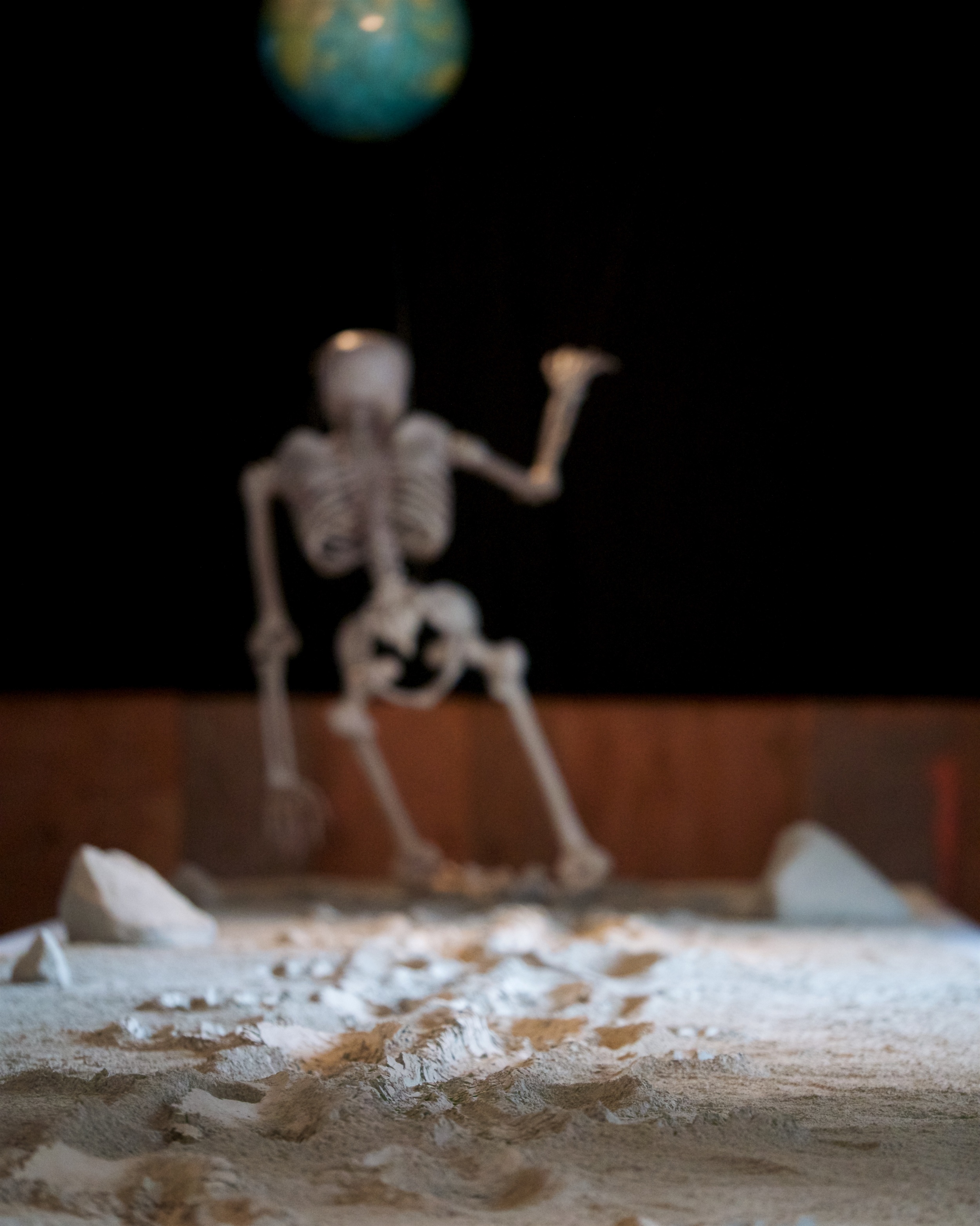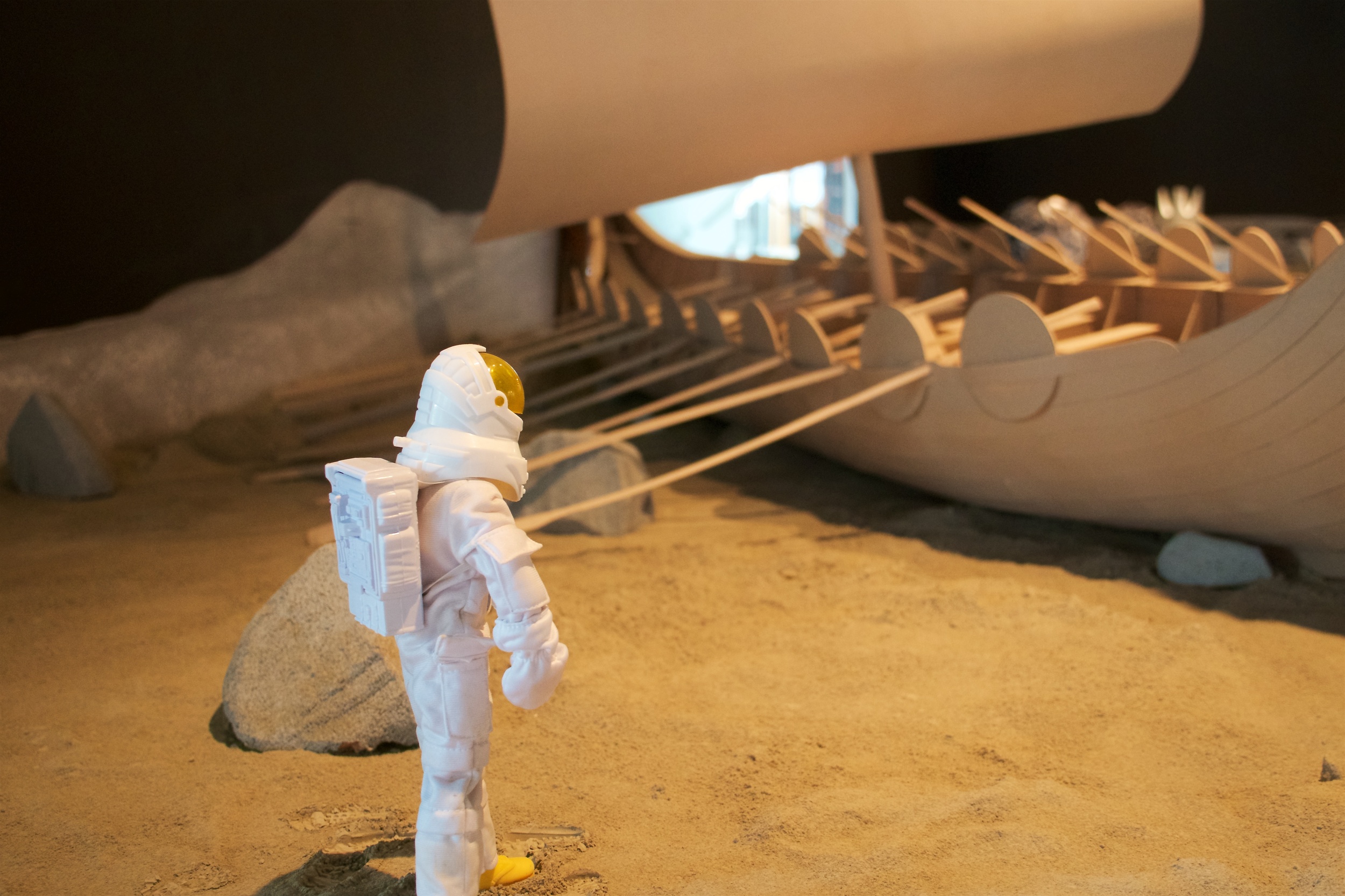Giant Steps at King Street Station
Seattle's King Street Station is where we usually go when we take a train trip, but until now you could only go through the main floor and the mezzanine. Just recently, the top floor has been converted to an art space, where the first exhibit is Giant Steps: Artist Residency on the Moon.
The concept for the show was to have artists submit proposals for work, which needed to conform to the following rules listed on the site:
- Your work on the Moon must be achievable by you and one assisting astronaut. Subcontractors and other third parties may assist in your preparations, operations and execution from Earth, but only the artist and assisting astronaut will be present on the Moon.
- The full payload of your supplies and materials to the moon cannot exceed 6 cubic feet and weigh no more than 60KG. Your return payload cannot exceed 5KG.
- No explosives, toxic substances, or hazardous materials may be included in said payload. Batteries and/or solar powered equipment are permissible.
- Artist, or artist groups may include installation, sculpture, performance, dance, film, moon works or mixed media.
- The resident artist and assisting astronaut will have a total of twelve hours outside the craft, on the surface of the moon. This time will be divided into three 4 hour intervals maximum. Total duration of Moon residency will be 48 hours.
- Artists may use existing material on the moon (such as rocks and dust) and are expected to leave their supplies and/or artwork on the moon.
- The budget for supplies and materials for your proposed project cannot exceed $500,000.00 US dollars.
- Artist and artist groups must take into consideration the temperature, gravitational force and other atmospheric conditions of the Moon. We recommend using Wikipedia for general information and consulting with scientists, engineers and physicists to verify the plausibility of your proposal. Proposals that do not consider the scientific and atmospheric conditions on the moon will not be included in the exhibition.
- The landing site of the craft will be in the lunar equatorial regions, near side of the Moon, during the lunar mid-morning.
- The winning proposal will be based upon originality, conceptual strength, and technical feasibility. Please view these parameters as though the winning proposal were indeed going to be executed.
Several of the submissions were close to the 60kg limit, and others close $500,000 in cost. One, however, was estimated at $12 for the cost of a shovel; the proposal was to dig a new crater on the moon.
The exhibit area was huge, and the proposals were anything but crammed together. They certainly found a good use for that top floor.
















